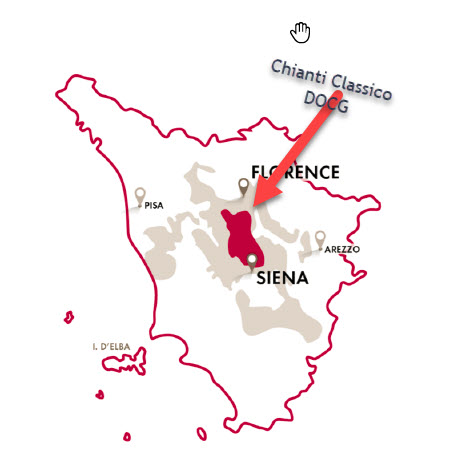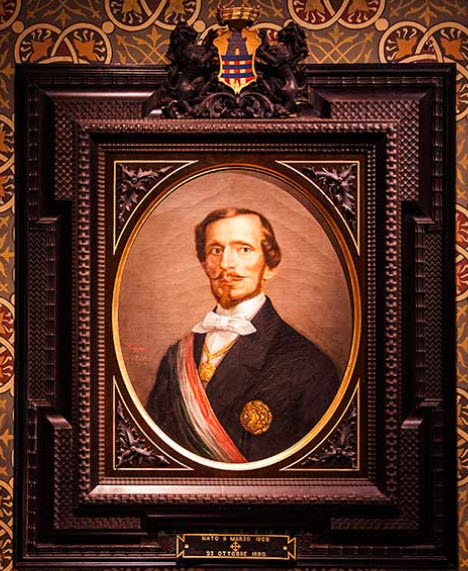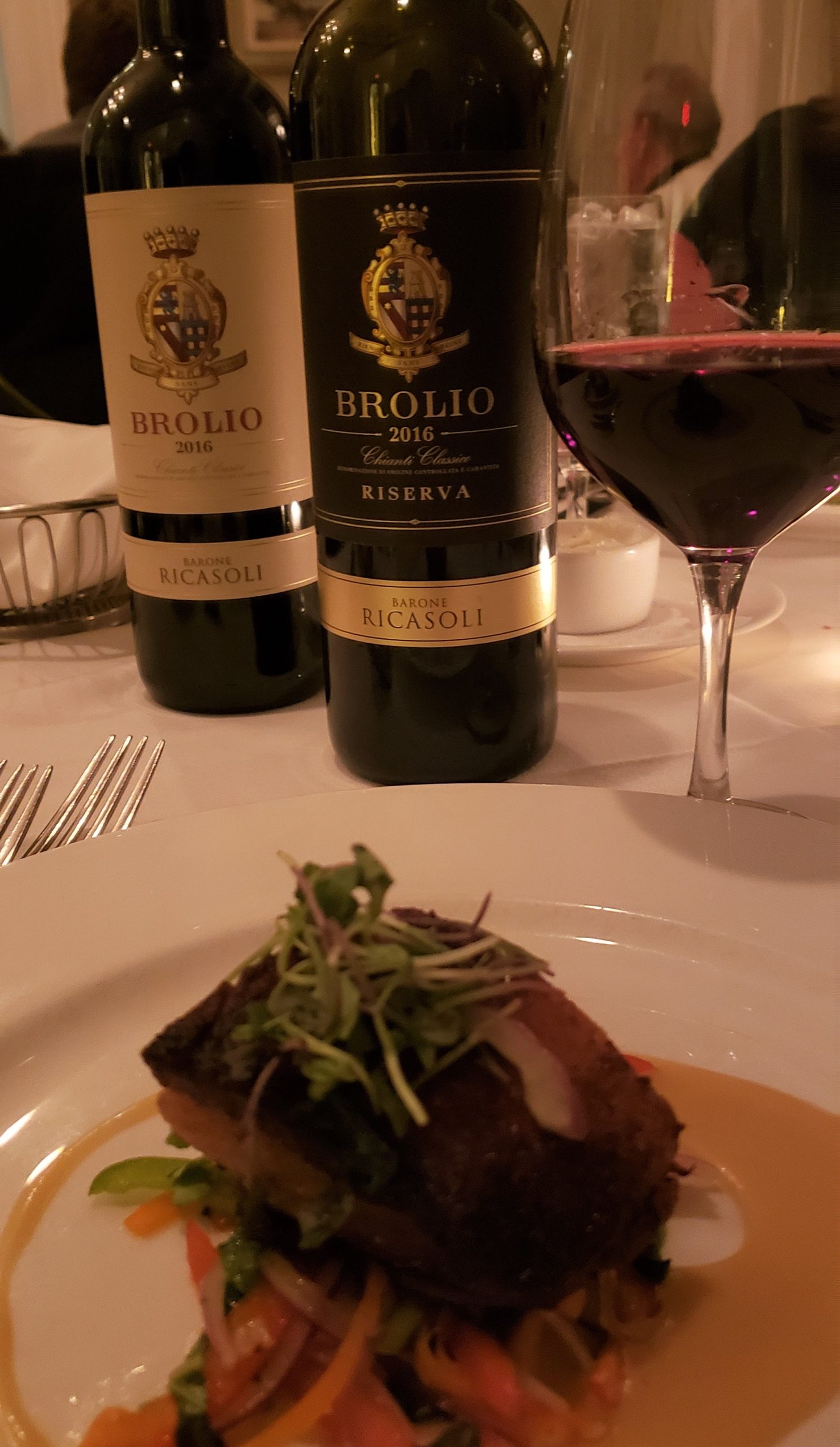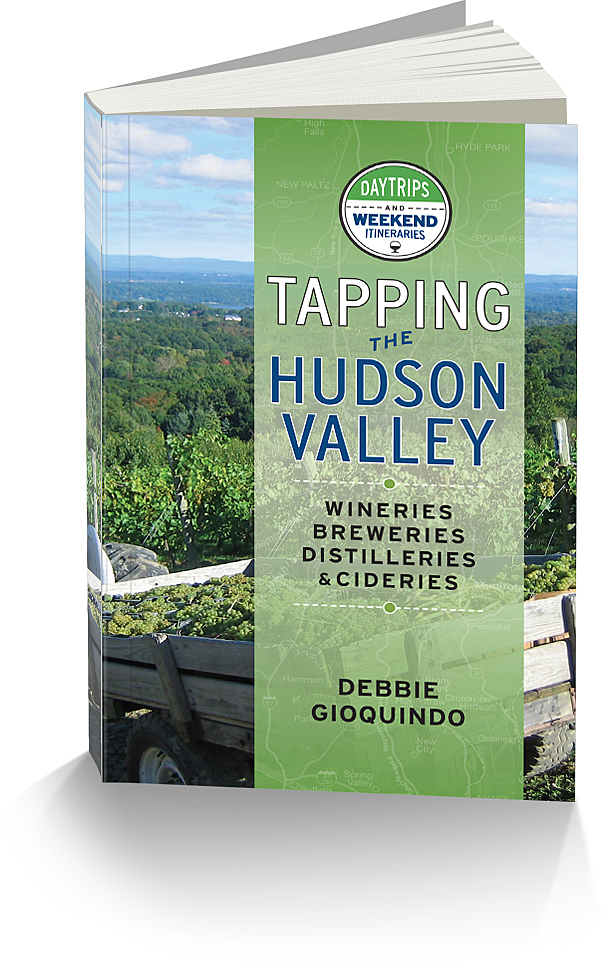Chianti Classico – What You Need To Know

I’m sure when you reach for that bottle of Chianti to go with your Italian meal you don’t question the origins. You know it’s from the Chianti region and that is good enough for your pairing. Do you know the difference between Chianti Classico and Chianti Classico Riserva? Did you know there is an actual recipe for Chianti Classico and the man who developed it? Stay with me, and we will touch on these areas so when you go reach for that bottle of Chianti Classico you will have a better understanding of its origins

Location
The Chianti region is a sub region of Tuscany established in 1716 and lies between Siena and Florence. The key grape grown is Sangiovese, although there are other grapes like Cabernet Sauvignon, Merlot and some local indigenous varieties grown as well.
Chianti Classico Classification System
As in many wines, the key to understanding what you are purchasing and pouring is to understand the classification system. This includes aging requirement, blending requirement and at times where the grapes are grown. There is a new classification in Chianti called Chianti Classico Gran Selezione. I will get into more detail on that in another article. For now, to understand here is what you need to know.
Chianti Classico – Chianti Classico must be made with a minimum of 80% Sangiovese grapes that are cropped at 3.35 tons per acre. The minimum alcohol level is 12%. The wine must be aged for 1 year, not to be released until October the following year.
Chianti Classico Riserva – must be made with a minimum of 80% Sangiovese, maximum vineyard yield is 3.35 tons per acre and the minimum alcohol level is 12.5%. The wine must age for 24 months with a minimum of 3 months aged in the bottle before released.
Chianti Classico Gran Selezione – This is a fairly new classification. The wine must be made with 80% Sangiovese but they all must be estate grown with a minimum alcohol level of 13%. The wine must age for 30 months with a minimum of 3 months aged in the bottle.
The remaining 20% of the grapes that are blended into Chianti Classico can be Cabernet Sauvignon, Merlot, Colorino and Canaiolo Nero.

The Man Behind the Recipe
The Ricasoli family has been making wine Chianti Classico dating back to 1141. It is the oldest winery in Italy and one of the four oldest wineries in the world. The property is home to the Brolio Castle located in the town of Gaiole.
Baron Bettino Ricasoli was a politician and visionary wine entrepreneur. He pushed for a focus on Sangiovese in Chianti Classico instead of the Canaiolo grape, and it was documented by 30 years of experimentation. He won and they then began using 70% Sangiovese. Today it has been modified to 80%.
The vineyards range from 220 to 500 meters in altitude with a Mediterranean climate.
Today Baron Francesco Ricasoli who has been the head of the winery since 1993 is just as scientifically in tune to winemaking and innovation as his predecessors. He is a major influence on the ongoing study of soil types and clonal research. He has mapped 19 different soils at Briolo. The 5 most important soil types are: Arenaria (Sandstone) found in the higher altitude. Scaglia Toscana which are compacted layers of clay, Alberese (limestone) that many vineyards are planted on. This is the area where some of their Cru wines (top wines) are planted. The Marine Deposit Soils are at the lower altitudes as are the Alluvial Terraces, altitudes up to 300 meters.

Ricasoli Chianti Classico
Ricasoli Chianti Classico 2016 – This is the flagship wine which is a blend of 80% Sangiovese, 15% Merlot and 5% Cabernet Sauvignon. It was fermented in stainless steel with 14-16 days of skin contact. It was aged for 9 months in 2nd and 3rd year barrels plus 3 to 6 months in the bottle before release.
Tasting Notes: Some dry herbs and earthy undertones, bright cherry, plum and hint of acidity. Very easy drinking. SRP $22
Ricasoli Chianti Classico DOCG Riserva 2016 – This is produced from a selection of estate-rown grapes that reflect all the soil characteristics of Brolio. The blend is 80% Sangiovese, 15% Merlot and 5% Cabernet Sauvignon. Wine was fermented in stainless steel tanks for with skin contact for 14 – 16 days. The wine was aged for 18 months in 1st and 2nd year barrels then aged in the bottle for 6 months before release.
Tasting Notes: Very complex, dark and rich. Black cherry, plum, anise and cocoa notes escape from the glass. The palate with soft tannins, layered with dark red fruit, black cherry, anise, black licorice, leather and cardamon, SRP $30

